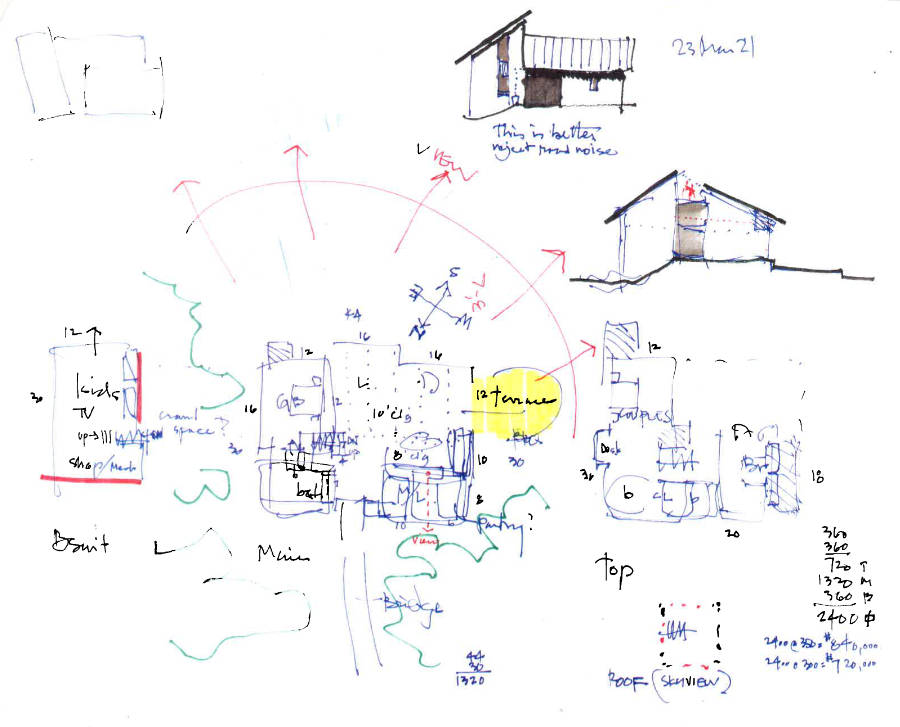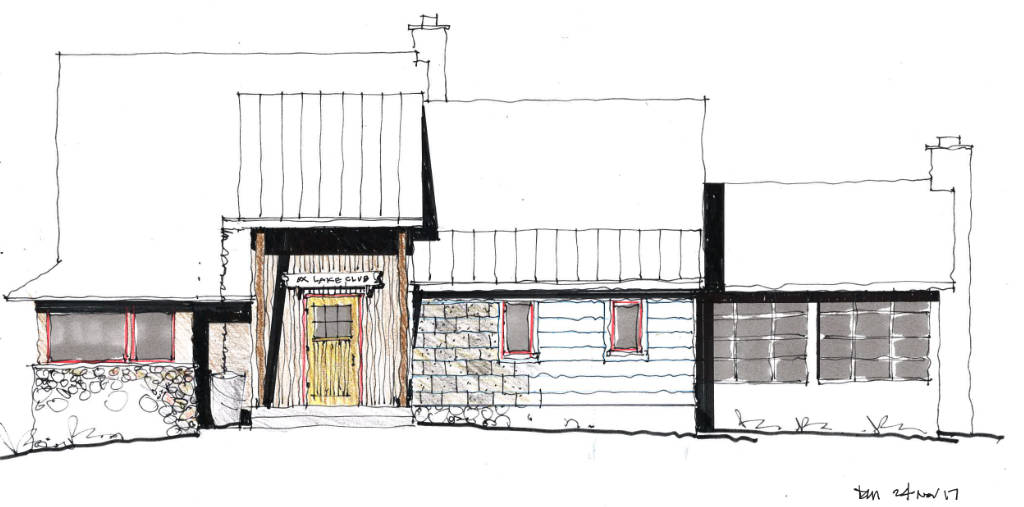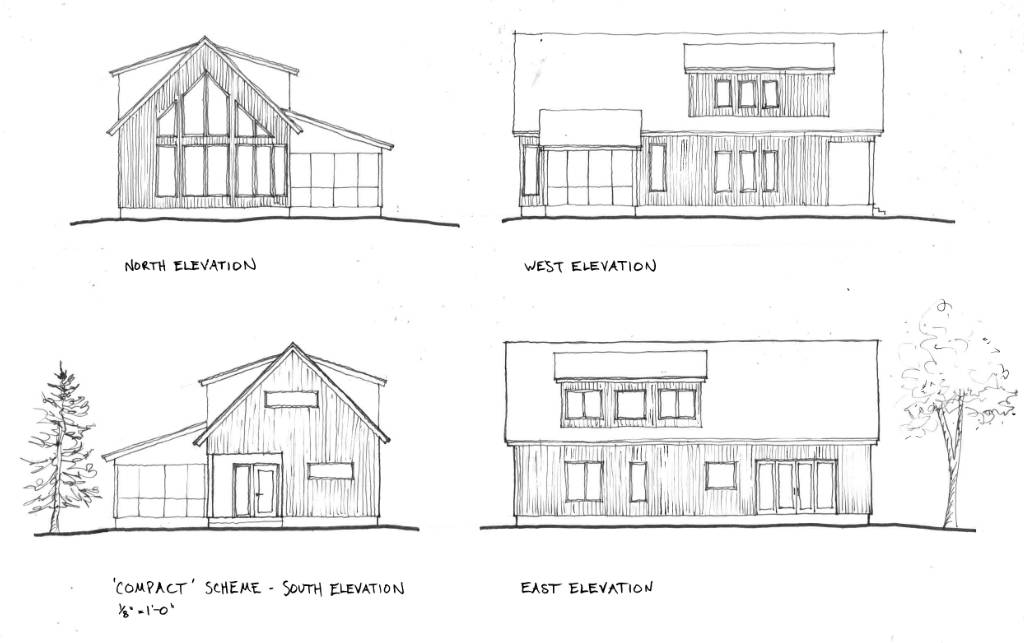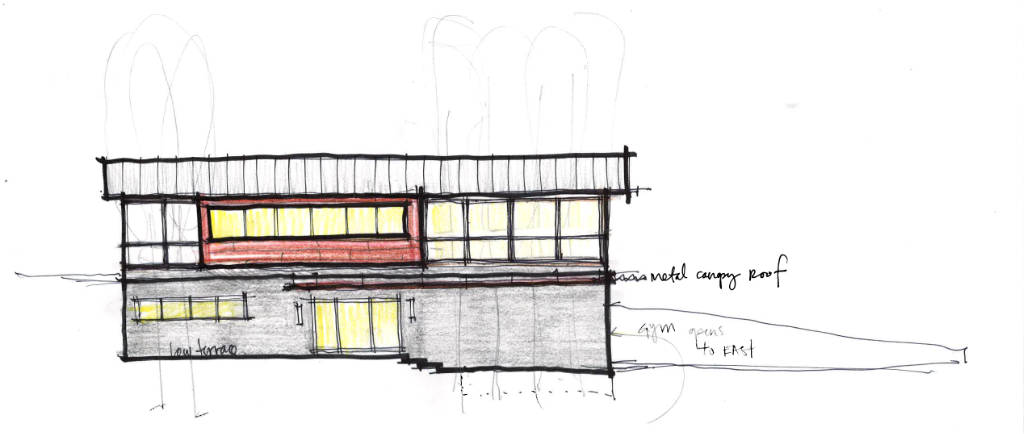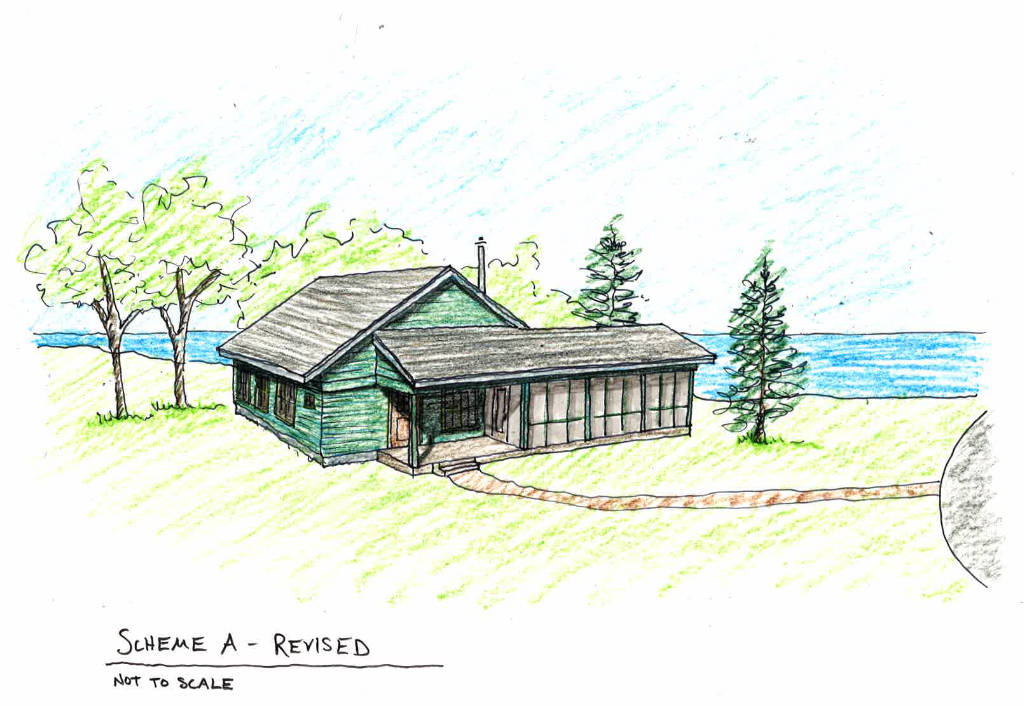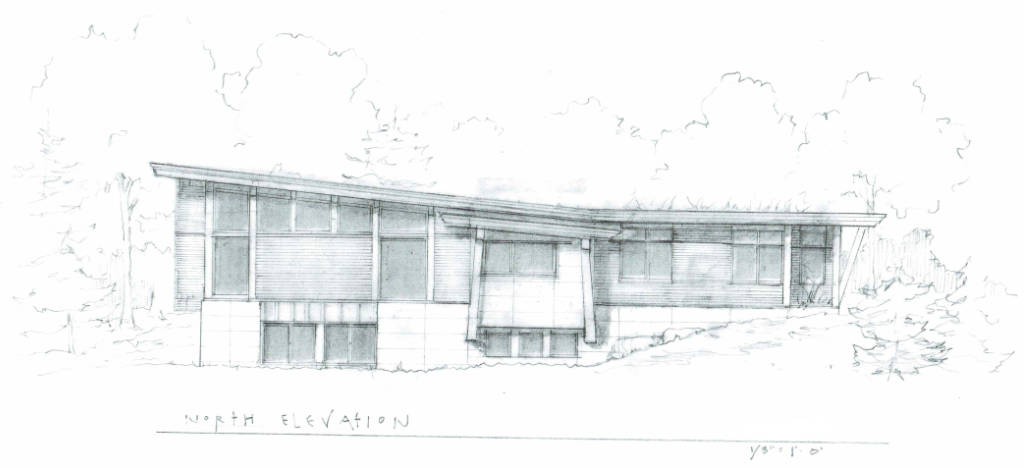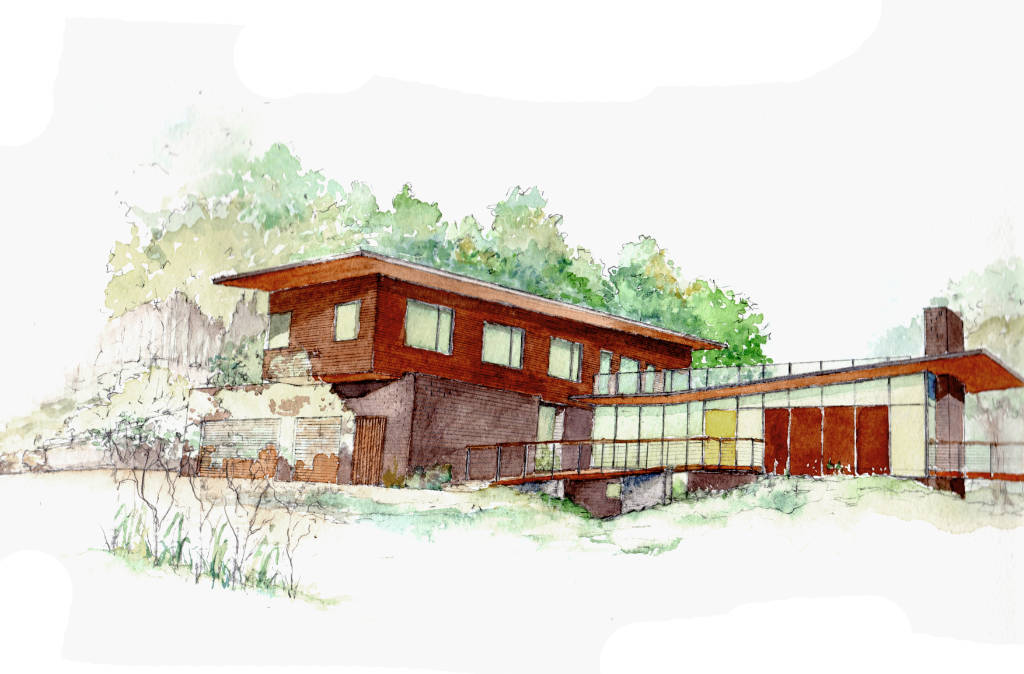I spent January working on schematic design. As I envisioned the form of a new cabin, I was reminded of talking with a class of design students a few months back. Their instructor had reached out to SALA wondering if one of us would speak to her class about presenting a design to clients. This would happen after the schematic or initial phase of the design process. I’m not quite sure how I ended up with the job, but I thought, why not? It’s always fun to show students how we work!
Schematic design often starts with a concept—perhaps it’s the goal of capturing a view, or an interplay of forms. Ideas spring from the project site or locality, take cues from an existing building, or arise from some forgotten corner of our brains. Sometimes they come from practicalities like construction methods, topography, or energy efficiency.
Above all, schematic design begins with our clients. We are inspired by what interests them, their hopes and dreams. Schematic design is more than just an arrangement of spaces, though it does involve that. We want to know how our clients live and what they value, and use that understanding to shape their home. In the end, it is not our design but theirs.
What was most fun to explain to my class of students was the way we develop these designs. At SALA, we’re relatively unique these days in that we draw our initial designs by hand. At first this takes the form of scribbles, diagrams and bubbles of spaces adjoining each other in different permutations. Once we settle on a direction, we draw scaled plans, elevations, and sections.
There are several reasons we choose to present our ideas this way: 1. In this early phase sketching is quick and malleable; it does not require the enormous amount of information input that modeling with the computer does. 2. As my colleague Dale likes to say, there’s an innate connection between hand and mind that can lead us to better results. 3. The loose format communicates to our clients that we’re not “done”—this is just the beginning and there’s plenty of time for changes! 4. The hand communicates character better than an early computer drawing does. The computer can generate beautiful drawings too, but only after much more time and effort.
Don’t be fooled by the looseness of our drawings, however. We never present something that we don’t know can be built. Though schematic designs are drawn with the sketchiness of a pencil, our drawings represent an immense amount of thought, trial, and study.
For many architects, schematic design is the most fun part of the design process because it is a moment of invention and creativity (not to mention markers and colored pencils!). We like to think through problems and solve them. Architects synthesize countless bits of information into something tangible and beautiful—this is what we do best!
